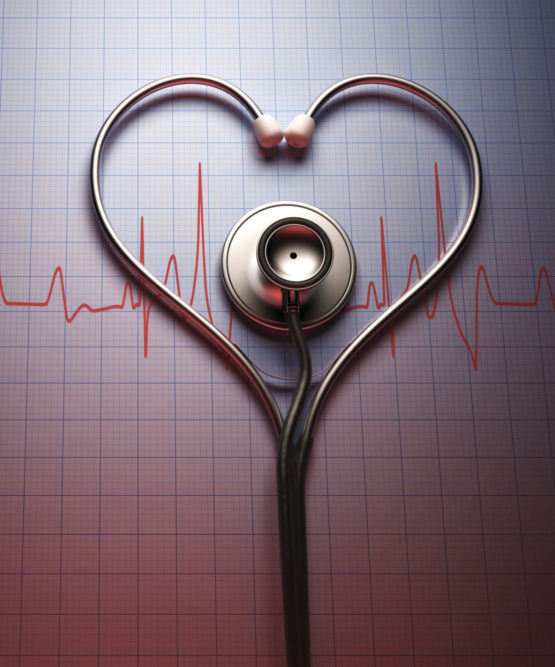The heart health supplements category is diverse, reflecting many risk factors associated with cardiovascular disease. It also grows and changes with the science surrounding heart disease. This feature discusses recent developments in the changing heart health segment. Is your store keeping up with the times?
Changing Recommendations
One significant and ongoing shift is the attitude toward cholesterol. The Scientific Report of the 2015 U.S. Dietary Guidelines Advisory Committee states, “Cholesterol is not a nutrient for concern of overconsumption,” given that “evidence shows no appreciable relationship between dietary cholesterol and serum cholesterol” (1).
That is not to say that cholesterol should be completely ruled out, it just means the focus has changed, adjusting accordingly to give greater urgency to other factors. As the focus has shifted away from cholesterol, greater emphasis has been placed on inflammation as a risk factor of cardiovascular disease. Now, inflammatiuon-support supplements such as curcumin are on the heart health radar, which consumers may not notice since most of the supplements place greater emphasis on joints to articulate their role in inflammation.
As Bryan See, regional product manager of ExcelVite, Inc., Edison, NJ, notes recommendation guidelines began shifting in 2013, with the American College of Cardiology/American Heart Association Guideline recommending that physicians rule out numerous other risk factors before placing a patient on cholesterol medications such as statins. While this certainly marked a change in the medical community and for patients, the supplements industry already had a diversified set of product formulations to address numerous aspects of heart health. According to See, this is due to regulatory requirements that do not allow supplements to claim to “reduce blood cholesterol,” forcing the industry to be innovative to penetrate the heart health market.
Similarly, with chronic inflammation increasingly being linked to a variety of diseases, the U.S. Food and Drug Administration (FDA) considers inflammation to be a disease claim. This means that the supplements industry must stick to structure-function claims. But just like there is more to heart health than cholesterol, so too is the case with inflammation, allowing for a wealth of supplements that address many factors.
Nutrient Deficiency
Omega-3. “One of the top causes of preventable death in America is omega-3 deficiency,” says Michael Ozner, M.D., medical director for the Center for Prevention and Wellness, Baptist Health South Florida, member of Nordic Naturals' Advisory Board and author of The Complete Mediterranean Diet and Heart Attack Proof. In particular, Ozner points to the higher threshold for sudden cardiac death for those with normal omega-3 levels. Sudden cardiac death is often the result of a sudden catastrophic arrhythmia called ventricular fibrillation. Two early studies that  Ozner cites found an inverse relationship between omega-3 levels and cardiac death. The 1999 GISSI-Prevenzione Trial in Italy studied a cohort of 11,324 patients who had survived myocardial infarction within the previous three months. Randomized to take either omega-3, vitamin E or neither, the results showed a 45% relative risk reduction of sudden cardiac death for those taking omega-3s (2).
Ozner cites found an inverse relationship between omega-3 levels and cardiac death. The 1999 GISSI-Prevenzione Trial in Italy studied a cohort of 11,324 patients who had survived myocardial infarction within the previous three months. Randomized to take either omega-3, vitamin E or neither, the results showed a 45% relative risk reduction of sudden cardiac death for those taking omega-3s (2).
The second study found that subjects with no history of myocardial infarction or stroke but who died of sudden cardiac death had significantly lower omega-3 levels in their blood compared to others. Meanwhile, those in the highest quartile of omega-3 blood levels had a relative reduced risk of 81% compared to those in the lowest quartile (3). A 2013 study by Mozaffarian et al. published in the Annals of Internal Medicine found that older adults with higher blood levels of omega-3s may have as much as a 27% lower overall mortality rate, but more specifically, as much as a 35% lower mortality rate from heart disease (4).
Ozner encourages patients to test their Omega-3 Index, which is the percentage of EPA and DHA in red blood cell fatty acids. This test can be conducted during routine blood work, though is generally neglected. Becky Wright, marketing director of Aker BioMarine Antarctic US, Lysaker, Norway, also articulates the importance of one’s Omega-3 Index, saying “omega-3 levels are not just a marker of fish intake, but a bona fide risk factor, just like cholesterol.” To provide some perspective, the optimal blood level of omega-3 is at or greater than 8%while the average in America is 3.5–4%. Compare this to Japan, where the average omega-3 blood level is 9.5%. They not only eat a great deal of fish, but they also have much lower incidence of heart attack, especially sudden cardiac death, according to Ozner.
Ozner believes healthy individuals should be consuming around 500 mg of EPA and DHA daily. Based on research like the GISSI-Prevenzione trial which gave subjects 800 mg of EPA and DHA, Ozner recommends intakes as high as 1,000 mg for at-risk individuals to effectively raise omega-3 levels.
Of course, negative headlines questioning the efficacy of omega-3s and heavy market saturation of omega-3 supplements created a welcome variety as well as variable quality. Cheryl Myers, chief of education and scientific affairs at EuroPharma, Inc., Greenbay, WI, points out, “I’ve seen fish oil capsules for sale in gas station convenience stores, so it has definitely gone mainstream.” As far as variable quality is concerned, Myers explains, “Many fish oils can be so completely oxidized—while still in the bottle—that you’re practically consuming free radicals.”
This and the negative headlines “put manufacturers in the position of having to re-educate consumers on the value of fish oil. This has also led many reputable manufacturers to take extra steps to ensure the purity and efficacy of the fish oil used,” says Jay Levy, director of sales, Wakunaga of America Co., Ltd., Mission Viejo, CA.
Vitamin D. Relatively new to the heart health sector, vitamin D is better known for its role in bone and immune health. However, increasing evidence suggests that vitamin D deficiency may be a risk factor for heart disease. Typically, 95% of the body’s required vitamin D is derived from the sun, while the remainder is absorbed from dietary sources such as fatty fish and dairy (5).
Assuming minimal sun exposure, the Institute of Medicine (IOM) determines that North Americans need about 400 IU of vitamin D daily, while people over 71 years of age need an average of 800 IU. Unfortunately, the average American adult only consumes about 230 IU daily (5). Still many nutrition experts recommend between 800 and 2,000 IU daily. FDA recognizes 2,000 IU as the safest upper limit while IOM suggests an upper limit of 4,000 IU (5). Such limits may be difficult to achieve without supplementation, depending on where one lives.
Ozner cites a study conducted by the Intermountain Medical Center in Murray, UT. The study, which analyzed over 27,000 patients, found that the prevalence of vitamin D deficiency was greater than 60%, with highly significant increased prevalence of type-2 diabetes and hypertension as well as a high association of coronary heart disease, myocardial infarction, heart failure, stroke and even mortality (5, 6).
Vitamin D deficiency can increase these risk factors through a variety of mechanisms. Because vitamin D helps regulate renin-angiotensin-aldosterone system (RAAS), a hormone system that controls blood pressure, deficiency predisposes individuals to up-regulated RAAS and hypertrophy, the thickening of ventricle walls, leading to high blood pressure (5). Perhaps most significantly, deficiency also reduced intestinal calcium absorption by more than 50%, triggering the release of parathyroid hormone (PTH) to correct serum calcium. Excess PTH has been linked to increased arterial pressure and in combination with vitamic D deficiency, causes the calcification of the mitral annular, heart valves and myocardium (5).
CoQ10. Perhaps the most well-known and accepted nutrient for heart health, CoQ10 is particularly crucial for patients taking statins for reducing cholesterol. This is because statins inhibit CoQ10 synthesis. “CoQ10 is indispensable for the production of biochemical energy within cell mitochondria,” says Herb Joiner-Bey, ND, medical science consultant for Barlean’s Organic Oils, Ferndale, WA. “For this reason, it is understandable why heart tissue has the highest concentration of CoQ10 in the human body.” This high concentration is required for optimal function because the heart uses more energy than any other tissue.
Although the depletion of CoQ10 is serious, Michael A. Smith, M.D., senior health scientist at Life Extension, Fort Lauderdale, FL, brings up a valid point, that while CoQ10 is a staple for cell energy  production, it requires healthy mitochondria to truly function. “Mitochondrial decay, the loss of mitochondrial number and function, is a real issue for aging Americans,” says Smith. “Our aging cells struggle to maintain high energy output largely due to the loss of healthy mitochondria.” For this, he suggests also supplementing with PQQ, which increases mitochondrial biomass through the activation of genes involved with mitochondrial production.
production, it requires healthy mitochondria to truly function. “Mitochondrial decay, the loss of mitochondrial number and function, is a real issue for aging Americans,” says Smith. “Our aging cells struggle to maintain high energy output largely due to the loss of healthy mitochondria.” For this, he suggests also supplementing with PQQ, which increases mitochondrial biomass through the activation of genes involved with mitochondrial production.
A 2014 double-blind, multicenter study published in the Journal of the American College of Cardiology: Heart Failure demonstrated CoQ10’s dramatic effects on patients with heart disease. It gave 420 patients in the most severe classes of heart failure (New York Heart Association class III and IV) either CoQ10 or placebo three times a day for two years (7, 8). At the end of the trial, only 16% of patients in the experimental group had a major adverse cardiac event compared to 26% of the placebo group (8). The experimental group also saw 9% cardiovascular mortality compared to 16% in the placebo group (8).
Magnesium. An essential mineral, acting as a cofactor in over 300 enzymatic reactions, magnesium (Mg) plays a particularly important role in heart health as a calcium channel blocker and cofactor for the enzyme that breaks down cholesterol (9). In fact, Carolyn Dean, MD, ND, Medical Advisory Board Member of the Nutritional Magnesium Association explains that the effects of Mg in the body may be comparable to statins. “Both statins and normal Mg levels prevent clotting, reduce inflammation and prevent atherosclerotic plaques,” says Dean, “but statins raise liver enzymes, can cause myopathy…as well as kidney and liver problems.” Mg, Dean explains, has no such side effects. That is not to say one should replace statins with Mg if a doctor found it necessary to prescribe such medication.
Dean cites a review of research studies dating back as far as 1936 that linked cardiovascular disease with magnesium deficiency in which author Andrea Rosanoff, Ph.D., director of research and science information outreach Center for Magnesium Education & Research, Pahoa, HI, describes a 1999 study that found “serum Mg below 0.8 mmol/L was associated with a higher risk heart disease, both incidence and death” (10). Despite this research, many clinical laboratories continue to consider serum Mg levels of 0.6-0.75 mmol/L to be of normal range, thus eliminating deficient Mg as a symptom.
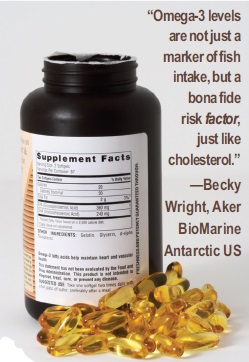
One new study by Peacock et al. validating this early research, found that, after adjusting for variables, there was a 40% risk reduction of sudden cardiac death in the highest quartile of serum Mg compared to the lowest quartile (11). Rosanoff says that populations throughout the world with low soil and water Mg levels have traditionally shown high rates of sudden cardiac death and the rise of cardiovascular disease in the United States corresponds with decreased dietary Mg as food became more processed (10). As food lost Mg levels, dietary calcium (Ca) in fortified food and supplements increased, creating a major imbalance.
According to Dean, the agreed upon ratio of Ca to Mg is 2:1, while what the average American consumes can be as high as 5:1 when coupling supplementation with a high-Ca diet (12). Excessive Ca in the system can create calcification in the arteries called atherosclerosis, a leading cause of heart attack death (12). Additionally, Mg converts vitamin D into its active form, which also aids in Ca absorption. Low serum Mg is often associated with low serum vitamin D, making Mg important for the absorption of both Ca and vitamin D (13).
Cholesterol: Old and New
As mentioned previously, attitudes toward cholesterol have shifted, with new science finding that it does not play as substantial a role in heart disease as was once thought. Now, it is acknowledged to be among the many factors contributing to heart disease rather than the main culprit. In fact, cholesterol plays an important role in the body, as there are both good (HDL) and bad (LDL) cholesterol.
Levy explains that it helps regulate cell signaling, creates bile acid to aid in digestion and plays a crucial role in brain health. Cholesterol is even “indispensable for the production of hormones like testosterone and estrogen, as well as vitamin D,” says Levy. He acknowledges, however, that excessively high cholesterol can play a role in the development of atherosclerosis, especially when said cholesterol becomes oxidized.
Dan Lifton, CEO, Quality of Life Labs, Purchase, NY seconds the importance of cholesterol in the body, explaining that it is also the "'parent' of estrogen, progesterone and testosterone." Additionally, says Lifton, "Only about 20% of our circulating cholesterol comes from dietary sources; the rest is made by the liver. In truth, low cholesterol intake from food will result in more being manufactured by the body." He too however aknowledges that there are those that do have genetic predispositions to dysfunctional cholesterol metabolism. That being the case, let’s examine some nutrients that support balanced cholesterol.
Bergamot. Bergamot is rich in polyphenols, natural compounds with antioxidant properties. Ozner explains that in Southern Italy, where the citrus fruit has grown and has been consumed for centuries, people were long lived. This anecdotal evidence inspired scientific research into the fruit and its health benefits. As it turns out, bergamot does quite a lot. Studies have found that it has remarkably similar effects to statins, though it cannot treat or prevent any diseases.
One study, which supplemented both rats and humans suffering from hyperlipidemia with bergamot extract, found that after 30 days, it reduced “total and LDL cholesterol levels (an effect accompanied by elevation of cHDL), triglyceride levels and by a significant decrease in blood glucose. Moreover, BPF inhibited HMG-CoA reductase activity” (14). Inhibiting HMG-CoA reductase activity is the same way statins function, while bergamot simultaneously increased HDL cholesterol. Although the science is still emerging, bergamot has other potential benefits, since its unique polyphenols target several factors of metabolic syndrome.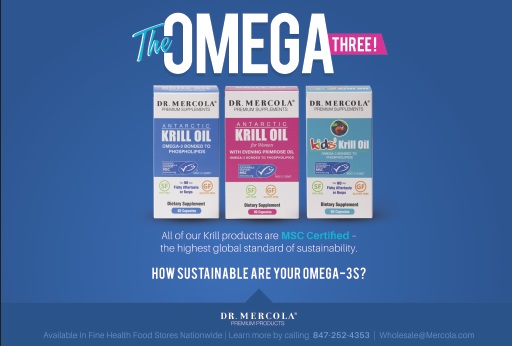
Metabolic syndrome is a cluster of conditions that include high blood pressure, high blood sugar, excess body fat around the waist and abnormal cholesterol, which have a direct influence on cardiac health (15). As was noted in the study, bergamot reduced LDL cholesterol and blood sugar. Ozner explains that the nutrient acts as an insulin sensitizer. This is important because diabetes is a result of insulin resistance and statins have been known to cause diabetes in some patients. Bergamot does so by initiating the production of AMP-activated protein kinase (AMPK), a central regulator of energy involved in the metabolism of glucose and fatty acid (16). In addition to regulating blood sugar, AMPK stimulates the burning of free fatty acids, promoting weight control (16).
Red yeast rice. A more established supplement for supporting healthy cholesterol levels, red yeast rice is the fermentation by-product of cooked non-glutinous rice that red yeast has grown on. Levy explains, “It contains a compound called monocolin K that inhibits the production of cholesterol by stopping the action of a key enzyme in the liver.” Drug companies know monocolin K as lovostatin, the active compound of the cholesterol-lowering drug Mevacor.
FDA considers red yeast rice to be an unapproved drug if a traditionally made product has more than trace amounts of monocolin K (17). As a dietary supplement with only trace amounts of monocolin K, red yeast rice has shown efficacy. One study by Venero et al. published in the American Journal of Cardiology found that among patients taking red yeast rice, total cholesterol was reduced by 15% and LDL was reduced by 21%. Patients with statin intolerance saw a decrease of 13% in total cholesterol and 19% in LDL (18).
Tocotrienols. Research has shown that tocotrienols, a form of vitamin E derived from sources such as palm and annatto, can aid in the maintenance of healthy cholesterol by inhibiting cholesterol production in the liver, suppressing HMG-CoA reductase activity and in tocotrienols specific to palm oil, suppressing plasma cholesterol (19). Tocotrienols’ effect on cholesterol has been attributed to its ability to increase cellular farnesol, which then signals the degradation of HMG-CoA reductase (20).
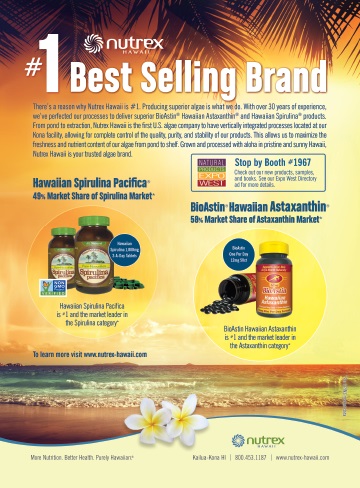 See cites one study in which 32 hypercholesterolemic subjects were randomly assigned to consume 300 mg of mixed tocotrienols capsules daily or placebo for six months, a significant decrease in cholesterol was found after four months in the experimental group. Results showed that compared to baseline, in the fifth months, total and LDL cholesterol reduction was at 8.9% and 12.8%, respectively. The sixth month saw further reduction, reaching 10.8% for total cholesterol and 17.3% for LDL (20).
See cites one study in which 32 hypercholesterolemic subjects were randomly assigned to consume 300 mg of mixed tocotrienols capsules daily or placebo for six months, a significant decrease in cholesterol was found after four months in the experimental group. Results showed that compared to baseline, in the fifth months, total and LDL cholesterol reduction was at 8.9% and 12.8%, respectively. The sixth month saw further reduction, reaching 10.8% for total cholesterol and 17.3% for LDL (20).
Other research suggests tocotrienols reduce arterial stiffness. One study cited by See demonstrated a decrease of arterial stiffness after two months. Of the 36 healthy male subjects receiving 50, 100 or 200 mg of tocotrienols, the most significant reduction was seen in subjects taking 100 and 200 mg (21).
Omega-7. The most prevalent omega-7 is palmitoleic acid, which is naturally occurring in plant seeds such as macadamia nuts and sea buckthorn as well as fish. Joiner-Bey describes omega-7 as “monounsaturated fat similar to oleic acid in olive oil.” Preliminary research has shown promise of omega-7 on a variety of cardiovascular risk factors, including cholesterol and platelet aggregation support.
Two studies cited by Levy and published in the Journal of Nutritional Biochemistry found that sea buckthorn supplementation increased HDL cholesterol levels in subjects. The first study by Yang et al. tested the effects of sea buckthorn seed and pulp oils on atopic dermatitis and found that the pulp oil significantly increased HDL cholesterol levels after four months (22). The second, a short eight-week study of 20 healthy males either given placebo or sea buckthorn juice, saw a 20% increase in HDL levels as well as a moderate decrease in LDL’s susceptibility to oxidization (23). Although the researchers of the second study did not deem the results “significant,” a longer trial may have achieved more statistically significant results.
Myers cites a study in which a branded sea buckthorn (SBA24) was tested on 12 healthy male volunteers for four weeks, the results of which showed “clear decrease in the rate of adenosine-5,
diphosphate-induced platelet aggregation and maximum aggregation” (24).
Circulation
Vitamin K2. This emerging nutrient functions similarly to magnesium by acting as a check against excess calcium. Vitamin K2 helps “to remove calcium from the lining of the blood vessels, and thereby preventing occlusions…and the resultant atherosclerosis,” explains Dean. “K2 facilitates the transfer of calcium from your arteries to your bones.” As was discussed previously, our current calcium-rich diets along with low magnesium content create an excess of calcium in our system, the unused portion of which can accumulate in the arteries.
Magnesium prevents calcium accumulation, while vitamin K2 directs the calcium where it is needed; the bones. “Vitamin K2-dependent proteins are now known to play pivotal roles in the physiology if bone mineralization,” explains Neil E. Levin, CCN, DANLA, nutrition education manager at NOW Foods, Bloomingdale, IL. This not only makes vitamin K2 an important tool against arterial calcification, but also makes calcium more effective.
Levy cites a 2015 study comparing postmenopausal women who received vitamin K2 or a placebo, which found that after three years, the women taking K2, particularly those with high levels of arterial stiffness when the trial began, had improved flexibility in their arteries (25). “This is critical for the concept of supplementation,” explains Eric Anderson, global vice president of sales and marketing, NattoPharma USA, Inc., Metuchen, NJ, “as epidemiological evidence has also shown that the modern Western diet is sorely lacking in natural concentrations of vitamin K2 menaquinone-7, leaving 97% of the Western population (even those consuming healthy diets) deficient in this essential nutrient.”
The groundbreaking Rotterdam Study of 4,807 men and women age 55 and older, taking place over 10 years, demonstrated an inverse relationship between K2 intake and coronary heart disease. When researchers compared baseline data collected over three years with the followup data, collected seven years later, results showed that those with high dietary intake of K2 had a reduced risk for arterial calcification of 50%, cardiovascular mortality of 50% and all-cause mortality of 25% (26).
Another recent study published in the Expert Review of Clinical Pharmacology found that statins may not only deplete CoQ10 but vitamin K2 as well (27).
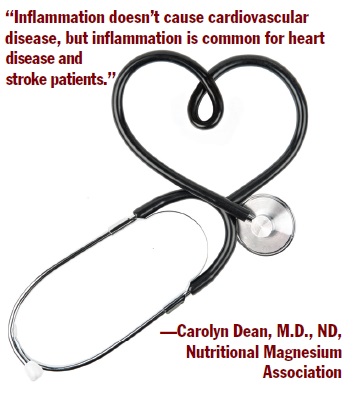
Pycnogenol. A potent antioxidant, Pycnogenol is an extract of French maritime pine bark exclusively supplied by Horphag Research USA, Hoboken, NJ, with a diverse set of health benefits, cardiovascular being among them. Sébastien Bornet, vice president of global sales and marketing at Horphag Research, says that Pycnogenol “helps maintain healthy circulation by supporting the relaxation of arteries—consequently improving blood flow and blood pressure and relieving the burden of the heart.”
One study cited by Bornet, which tested Pycnogenol supplementation on 23 subjects with stable coronary artery disease, found that after eight weeks, there was a significant increase in endothelial function as measured by flow-mediated dilation (28). This is important because “the balance between endothelial function and dysfunction plays an important role in the initiation and progression of atherosclerosis and in the transition from a stable to an unstable disease state” (28).
Another study he cites, demonstrates Pycnogenol’s ability to improve risk factors of metabolic syndrome such as waistline obesity, high cholesterol, high blood pressure and high blood sugar. Sixty-four subjects presenting with these risk factors were given 150 mg/day of Pycnogenol for six months. After the trial, the supplemented group showed a decrease of waistline circumference, triglyceride levels, blood pressure and fasting glucose, as well as an increase in HDL cholesterol when compared to control (29).
AGE. Aged garlic extract (AGE) paired with CoQ10 has been shown to support arterial compliance. A study cited by Levy tested calcium level and plaque deposits in the arteries of 65 Los Angeles firefighters before and after a year of supplementation with 1,200 mg of AGE and 120 mg of CoQ10. Results showed “the combination of AGE and CoQ10 was independently associated with significant beneficial effects on vascular elasticity and endothelial function in firefighters with high occupational stress” (30).
study cited by Levy tested calcium level and plaque deposits in the arteries of 65 Los Angeles firefighters before and after a year of supplementation with 1,200 mg of AGE and 120 mg of CoQ10. Results showed “the combination of AGE and CoQ10 was independently associated with significant beneficial effects on vascular elasticity and endothelial function in firefighters with high occupational stress” (30).
That same study found a relationship between AGE/CoQ10 supplementation and inflammation. “After a one-year consumption of AGE plus CoQ10, an increase in C-reactive protein (CRP) was more common in the placebo group,” stated the study, while, “firefighters in the AGE/CoQ10 group…showed the greatest CRP decrease” (30). CRP is a biomarker for inflammation of the arteries and appears to be correlated with heart disease risk.
Inflammation
“Inflammation doesn’t cause cardiovascular disease,” explains Dean, “but inflammation is common for heart disease and stroke patients and is a sign or symptom of the degeneration of the walls of the arteries caused by accumulated fatty deposits and scar tissue, and leading to restriction of the circulation and risk of thrombosis.” So, while inflammation is a natural bodily response, chronic low-grade inflammation can have negative health consequences, presenting itself alongside various conditions.
“What that does is a lot of deleterious things to the blood vessels, creating endothelial dysfunction, increases trafficking of certain lipoproteins, up-regulates the risk of blood clotting,” says Ozner.
How inflammation detriments cardiovascular health, says Jolie Root, senior nutritionist and educator at Carlson Labs, Arlington Heights, IL, is by playing, “a fundamental role in the genesis of atherosclerotic plaques.”
Because of this, “Markers such as CRP or plasma viscosity (PV) are now more relevant than ever when assessing cardio health,” says Rob Maru, chief innovation officer at Reserveage Nutrition, Boca Raton, FL. CRP, “an acute-phase reactant reflecting degrees of inflammation” which has been linked to insulin resistance and metabolic syndrome, is a stronger predictor of cardiovascular events than LDL cholesterol levels explains Joiner-Bey. In fact, screening for both LDL and CRP is more prognostic, he says. In addition to these markers, Lifton explains that more holistic minded physicians also test for serum ferritin (iron), fibrinogen, homoceystein, interleukin-6 and lipoprotein, all of which can impact arterial health through inflammation.
Some of the nutrients previously mentioned play a role in inflammation. Among those is omega-3, which as an already established nutrient for cardiovascular health, continues to demonstrate its importance and versatility. Smith explains that with regard to inflammation, the ratio of pro-inflammatory omega-6 to 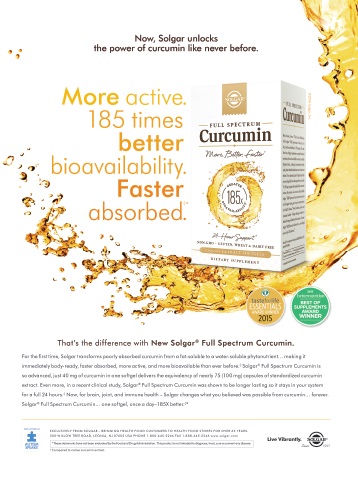 anti-inflammatory omega-3 “creates an environment that fosters inflammation and contributes to vascular disease.” He says that lowering that ratio has been shown to decrease atherosclerotic lesion size and recommends a ratio of less than 4:1.
anti-inflammatory omega-3 “creates an environment that fosters inflammation and contributes to vascular disease.” He says that lowering that ratio has been shown to decrease atherosclerotic lesion size and recommends a ratio of less than 4:1.
Root adds vitamin D and vitamin E (tocotrienols) to this list, explaining that vitamin D down-regulates CRP and that vitamin E, when taken in doses of 600 IU or higher, has a direct effect on CRP.
Because calcium is one of the most pro-inflammatory substances in the body, as a calcium channel blocker, Mg is another vital nutrient that has anti-inflammatory properties, explains Dean. She cites a 2014 meta-analysis and systematic review published in the European Journal of Clinical Nutrition that found Mg intake is inversely associated with serum CRP (31). Three cross-sectional studies that compared lowest to highest intake of Mg found a 49% greater risk of elevated CRP levels of over 3 mg/L among participants whose Mg intake was lowest compared to those whose intake was highest (31).
Curcumin. Consumers may not connect curcumin to cardiovascular health right away since it is usually marketed for joint or cognitive health, but given inflammation’s role in atherosclerosis, curcumin can certainly be utilized for cardiovascular support. One randomized, double-blind, placebo-controlled trial that tested 70 participants either receiving placebo, low-dose, moderate-dose or high-dose curcumin for two months, found that compared to high-dose, low-dose curcumin was highly effective in reducing total and LDL cholesterol levels (32). It also increased HDL cholesterol levels. Another study that administered 500 mg/day of curcumin to volunteers for seven days found a reduction of 33% in serum lipid peroxides, an 11.63% reduction in total serum cholesterol and a 29% increase in HDL cholesterol (32).
More research is required to determine curcumin’s exact role in cardiovascular health but as the chronic inflammation emerges as a factor in a diverse set of health problems, so does curcumin’s versatility in human health. Unfortunately, because of chronic inflammation being considered a disease by FDA, it is becoming difficult for supplement manufacturers to legally articulate benefits. “Manufacturers like NOW Foods who strictly follow regulatory requirements now have a difficult time communicating honest, evidence-based benefits of some products,” explains Levin, “because we can’t openly discuss even the maintenance of already normal oxidative and inflammatory processes in healthy people trying to stay that way.”
This makes it important, as retailers, to articulate to consumers the various ways that dietary supplements can support a healthy cardiovascular system. While it must be made clear that dietary supplements are not medicine, consumers interested in supplementation have a right to know viable options to make an informed decision. WF
CORRECTION: A previous version of this article ommitted Dr. Michael Ozner's role as member of Nordic Naturals' Advisory Board. (Updated 1/22/2016 4:52 PM)
UPDATED 2/8/2016
References
1. B.E. Millen et al. "Scientific Report of the 2015 Dietary Guidelines Advisory Committee: Advisory Report to the Secretary of Health and Human Services and the Secretary of Agriculture." January 28, 2015.
2. "Dietary supplementation with n-3 polyunsaturated fatty acids and vitamin E after myocardial infarction: results of the GISSI-Prevenzione trial." The Lancet. 354(9177): 447-455. 1999.
3. C.M. Albert et al. "Blood levels of long-chain n-3 fatty acids and the risk of sudden death." The New England Journal of Medicine. 346: 1113-1118. 2002.
4. "Higher blood omega-3s associated with lower risk of premature death among older adults." http://www.hsph.harvard.edu/news/press-releases/higher-blood-omega-3s-associated-with-lower-risk-of-dying-among-older-adults/. Accessed December 20, 2015.
5. C.J. Lavie, J.H. Lee, R.V. Milani "Vitamin D and cardiovascular disease: Will it live up to the hype?" J Am Coll Cardiol. 58(15): 1547-1556. 2011.
6. B. Tami et al. "Supplementing deficient vitamin D levels is associated with reduced cardiovascular risk." J Am Coll Cardiol. 55(10s1). 2010.
7. B. Tomkins. "CoQ10 Proven Benefits in Heart Failure Patients." Life Extension Magazine. http://www.lifeextension.com/magazine/2014/4/coq10-proven-benefits-in-heart-failure-patients/page-01. Accessed January 5, 2016.
8. S.A Mortensen. " The effect of coenzyme Q10 on morbidity and mortality in chronic heart failure: results from Q-SYMBIO: a randomized double-blind trial." JACC Heart Failure. 2(6): 641-649. 2014.
9. R. Nicoll et al. "A review of the effect of diet on cardiovascular calcification."
Int J Mol Sci. 16(4): 8861–8883. 2015
10. A. Rosanoff. "The Magnesium Hypothesis of Cardiovascular Disease: The Missing Mineral —Magnesium."http://www.nutritionalmagnesium.org/magnesium-deficiency-linked-to-heart-disease/. Accessed December 18, 2015.
11. J.M. Peacock et al. " Serum Magnesium and Risk of Sudden Cardiac Death in the Atherosclerosis Risk in Communities (ARIC) Study." Am. Heart J. 160(3): 464-470. 2010.
12. "High Calcium - Low Magnesium Risk." http://www.nutritionalmagnesium.org/high-calcium-low-magnesium-risks/. Accessed December 16, 2015.
13. A. Rosanoff. " Appendix V: Importance of Balancing Ca with Mg and Dangers of the Rising Ca:Mg Dietary Intake Ratio." http://nutritionalmagnesium.org/images/stories/pdf/AppendixVrevA.pdf. Accessed December 18, 2015.
14. V. Mollace et al. " Hypolipemic and hypoglycaemic activity of bergamot polyphenols: From animal models to human studies." Fitoterapia. 82(3): 309-316. 2011.
15. "Metabolic Syndrome." http://www.mayoclinic.org/diseases-conditions/metabolic-syndrome/basics/definition/con-20027243. Accessed December 21, 2015.
16. J. Whitaker. "Benefits of Bergamot." http://www.drwhitaker.com/benefits-of-bergamot/. Accessed December 18, 2015.
17. "Red Yeast Rice: An Introduction." https://nccih.nih.gov/sites/nccam.nih.gov/files/Get_The_Facts_Red_Yeast_Rice_07-01-2013.pdf. Accessed December 18, 2015.
18. C.V. Venero. " Lipid-lowering efficacy of red yeast rice in a population intolerant to statins." Am J Cardiol. 105(5): 664-666. 2010.
19. "Tocotrienol Research." http://www.tocotrienol.org/health-benefits-of-tocotrienol.html. Accessed December 18, 2015.
20. K.H. Yuen et al. "Effect of Mixed-Tocotrienols in Hypercholesterolemic Subjects." Functional Foods in Health and Disease. 3: 106-117. 2011.
21. A.H. Rasool et al. "Arterial compliance and vitamin E blood levels with a self emulsifying preparation of tocotrienol rich vitamin E." Arch Pharm Res. 31(9): 1212-1217. 2008.
22. B. Yang et al. " Effects of dietary supplementation with sea buckthorn (Hippophaë rhamnoides) seed and pulp oils on atopic dermatitis." The Journal of Nutritional Biochemistry. 10(11): 622-630. 1999.
23. C. Eccleston et al. " Effects of an antioxidant-rich juice (sea buckthorn) on risk factors for coronary heart disease in humans." The Journal of Nutritional Biochemistry. 13(6): 346-354. 2002.
24. A.K. Johannson et al. " Sea buckthorn berry oil inhibits platelet aggregation." The Journal of Nutritional Biochemistry. 11(10): 491-495. 2000.
25. M.H. Knapen et al. " Menaquinone-7 supplementation improves arterial stiffness in healthy postmenopausal women. A double-blind randomised clinical trial." Thromb Haemost. 113(5): 1135-1144. 2015.
26. “Retailer Guide to Vitamin K2 as Menaquinone-7: The Missing Nutrient Addressing a Newly Recognized Deficiency” WholeFoods Magazine. https://wholefoodsmagazine.com/multimedia/ebooks/retailer-guide-vitamin-k2-menaquinone-7. Accessed January 5, 2016
27. H. Okuyama et al. " Statins stimulate atherosclerosis and heart failure: pharmacological mechanisms." Expert Rev Clin Pharmocol. 8(2): 189-199. 2015.
28. F. Enseleit et al. "Effects of Pycnogenol on endothelial function in patients with stable coronary artery disease: a double-blind, randomized, placebo-controlled, cross-over study." Eur Heart J. 1589-1597. 2012.
29. G. Belcaro, et al. "Pycnogenol® supplementation improves health risk factors in subjects with metabolic syndrome." Phytother Res. 27(10): 1572-1578. 2013.
30. V.N. Larijani et al. " Beneficial effects of aged garlic extract and coenzyme Q10 on vascular elasticity and endothelial function: The FAITH randomized clinical trial." Nutrition. 29(1): 71-75. 2013.
31. D T Dibaba et al. "Dietary magnesium intake is inversely associated with serum C-reactive protein levels: meta-analysis and systematic review” European Journal of Clinical Nutrition. 68: 510-516. 2014
32. S.C. Gupta et al. "Therapeutic Roles of Curcumin: Lessons Learned from Clinical Trials." AAPS J. 15(1): 195-218. 2013.
Published in WholeFoods Magazine February 2016

